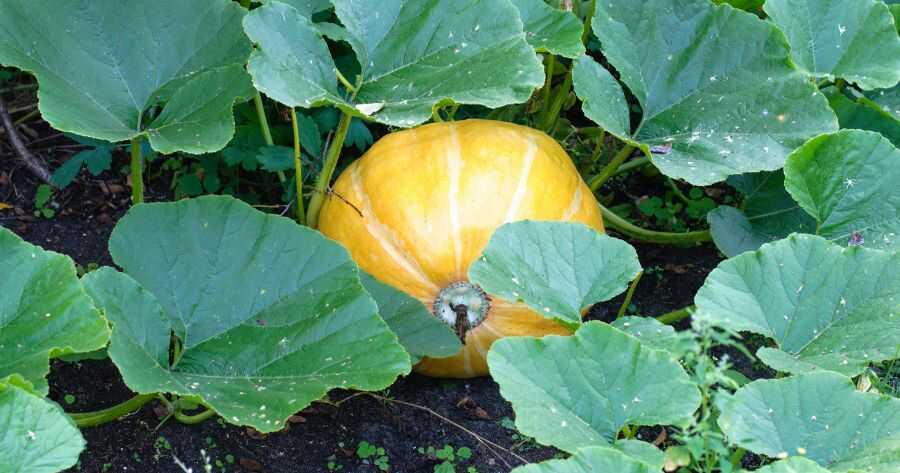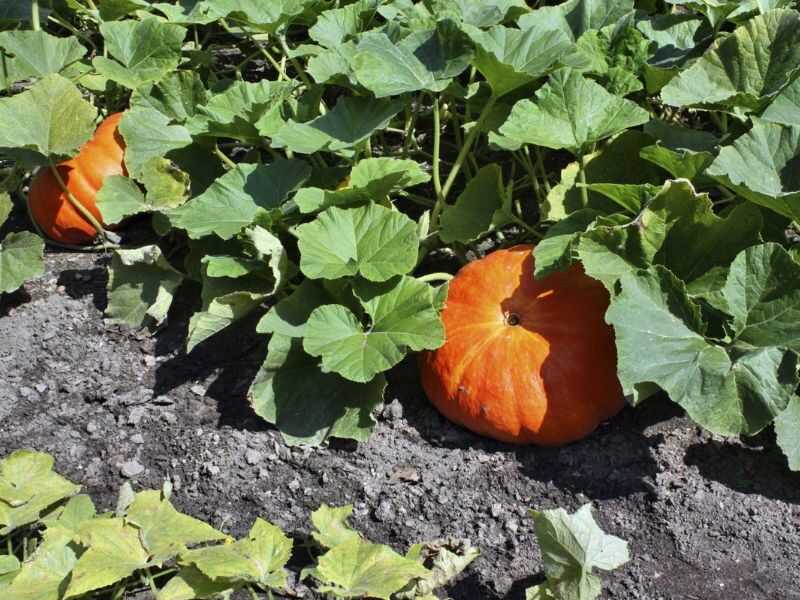
Growing pumpkins is a rewarding experience. Pumpkins are easy to grow and are used in many food dishes. They're also beautiful plants that can decorate your garden with their vibrant colours and interesting shapes. They make great jack-o'-lanterns during Halloween, too!
Choose the Right Type

Choosing the right kind of pumpkin for your garden is one of the most important steps in growing pumpkins. You can grow a variety of types, including small ornamental pumpkins, large ornamental pumpkins and pie pumpkins.
When planting your seeds, make sure to choose a time that's best for your climate and location. In general:
- Spring: Mid-April through May (for warm-weather climates) or early June through July (for cooler climates)
- Summer: Mid-July through August
If you have plenty of room for a large vine but don't want to wait until next year's harvest to enjoy homegrown pumpkins, consider planting half a dozen different varieties at once! Just be aware that some may produce fruit earlier than others; if this type of variety control isn't ideal for you then stick with just one type at first so that all its fruits ripen together by fall time.
Learn When to Plant

Pumpkins can be planted in spring, summer or fall. Fall planting is not recommended as the chances of a successful harvest are slim to none. Winter planting is possible, but you need to know what you're doing before attempting it.
Choose a Spot in Full Sun
Choosing a location that receives full sun is important, as pumpkins thrive on direct sunlight. They need 6-8 hours of sunlight each day to thrive and will be able to bear fruit.A partially shaded spot will get about 2-4 hours of direct sunlight per day, so this would not be ideal for your pumpkin patch unless you're only growing one or two plants. Pumpkins do best with no direct sunlight if you have a very shady yard or live in an area with overcast weather most days.
Add Water and Compost

Water the plants regularly, especially during dry periods. You can use a watering can to ensure that each plant gets enough water. This is especially important if you have a large patch of pumpkins because they need moisture to grow healthy roots. The soil should be moist at all times, but not soaked or muddy.
Add Mulch
You can keep your pumpkin patch moist by adding mulch around the base of each plant after it has grown past its seedling stage and has developed several leaf stalks (about three inches tall).
Thin the Seedlings

Once the seeds have germinated, it is time to thin your pumpkin seedlings. This involves pulling out some of them so that they will have room to grow.
To thin pumpkin seedlings: Carefully pull up one of your seedlings and look at its roots. If there are several roots coming from one spot, select that leafy part and gently pull it up in order to reveal its roots more clearly.
Look closely at all parts of the root system - you don't want to remove any healthy ones!
Pull out any seedlings whose root system seems less than perfect or unhealthy; if you suspect that removing this plant will cause problems for another seedling nearby, leave it alone (unless you'd like an extra plant).
Fertilize Your Plants
Fertilizing your pumpkin plants will promote strong growth and, in turn, fruit production. To be most effective, fertilize after the vines have grown a few inches in length. Use a fertilizer with a 3-1-2 ratio (nitrogen [N], phosphorous [P], potassium [K]), which will help promote healthy plant growth.Look for one that has an amount of nitrogen that is high and potassium that is also high on the label as well; this will help ensure proper development of your pumpkins' vines and roots.
Tame Vines

You will need to prune your pumpkin vines every few weeks as they grow. Pruning can be done manually, with a sharp knife or garden clippers, or it can be done with the help of a manual or electric string trimmer. If you have trouble reaching high into the air and cannot get good leverage on the vine with your hands, using a pole saw may be useful for cutting down vines.
When pruning your vines, keep in mind that all leaves are photosynthetic organs and therefore essential to life and growth of both pumpkin plants and their fruit. As such, it's important not to cut off too many leaf clusters at once when pruning-typically no more than half of them should be removed at any one time.
Also avoid getting any part of the plant wet during this process; if necessary use gloves so that you don't get scratched by thorns while handling sticky vines (or other harmful plants).
Watch for Pests and Diseases
There are many pests that can damage pumpkins. Some of these include aphids, squash bugs and vine borers. To keep your pumpkins safe from harm, regularly check the plant for any signs of infestation. You can do this by gently tapping on the leaves and stems to see if you hear or feel anything unusual.If you notice a problem with your pumpkin plants, try using organic insecticidal soap as an effective way to get rid of pests such as aphids or beetles without using harmful chemicals.
For diseases like powdery mildew which cause leaf spotting, cucumber mosaic virus which causes yellow patches on leaves and stem distortion caused by fusarium wilt disease (Fusarium oxysporum cubense), there are no known organic methods for treating them at this time so it's best to just remove affected plants when possible so they don't spread their infection to other nearby plants in your garden space.
You Can Grow Beautiful Pumpkins

If you're looking for a healthy, fun and tasty food to grow at home, pumpkin is a great choice. Gardens are beautiful when they are full of colourful flowers or surrounded by lush green grass. However, it can be difficult to find plants that will thrive in your garden even if it has the perfect conditions for them. Luckily, there are many varieties of pumpkins that will thrive in almost any environment.
Pumpkins grow easily from seeds and need little care once they are established. They will not die back during winter months-in fact some types may even produce more fruit after being exposed to cool temperatures than when kept warm all year round!
Because pumpkins come in so many different shapes and sizes (from small gourds to giant jack-o'-lanterns), there is something for every gardener's taste whether they have space for only one plant or want something decorative around their house throughout autumn season until harvest time comes around again next year."
Conclusion
Pumpkins are a popular fall crop, but they’re also great to grow year-round. If you want to try growing pumpkins in your garden this season, remember that patience is key! It can take up to two months for them to germinate, and another month or so before those seedlings turn into little pumpkin plants with colourful leaves.Once your plants reach about six inches tall (or more), though, they’ll start producing flowers that will eventually turn into pumpkins. Now all you have left is to harvest those delicious fruits of your labour! - Garden Lot
Tags:
Garden
